2010 Honda Civic Type-R

| The Good: – Aggressive exterior styling – Ride and handling – Best manual gearbox ever |
The Bad: – Not as quick as it feels – Exiting the cabin is awkward – Not enough tech features |
After a gap of half-a-decade, the Honda Civic Type-R is finally back on the sandy shores of the UAE. Indeed, the British-built hatchback may not be the best ever Type-R model, but it is still better than having none at all. It got tiring to see Honda fanboys paste “Type-R” stickers on regular family cars, and the real deal will certainly separate the enthusiasts from the wannabes.
The European Civic looks nothing like any other Honda. Being the only actual sports model in Honda’s current line-up, it is also fitting that it looks completely different from its conservative siblings, with a pointy front end, single-strip rear lighting, arrowhead door handles, split rear window, an oddly-placed rear spoiler, red Honda emblems, cheesy metal-look fuel filler flap, triangular fog lamps and even triangular exhaust tips. It may not be elegant, but it certainly draws glances from bystanders.
The interior will be familiar to current Civic sedan owners, but the two-tier dashboard is a bit different in styling, with a smaller screen to the right displaying radio and a/c info. The tachometer gauge gets the central spot, with a graphical info display in the middle of the gauge, while the speedo is a numerical digital display. More interesting were the countdown ‘dots’ that light up to show when to shift gears, while a ‘VTEC’ light blinks on every time the “VTEC just kicked in, yo!”
In terms of materials, the upper dash and door areas are covered in harder soft-touch plastics than the Japanese-built sedan. The cloth door inserts are red to match the red-black sports seats. The grippy seats themselves sport Type-R logos and red stitching, while the shift knob and pedals are aluminium. The look is premium as long as you don’t feel up the harder panels too much. There is even a little badge on the centre console with a limited-edition serial number.
The cabin looks very high-tech, but isn’t really as futuristic as it appears to be. There is an above-average CD/MP3 stereo with AUX and USB ports, a strong dual-zone a/c with front passenger controls on the passenger-side door, cruise control, HID auto headlights, keyless entry, headlight washers, rear parking beepers, auto-dimming mirror, front-side airbags and a big red starter button. That’s about it really. Beyond the power windows and electric mirrors, the seats are manually-adjusted, there is no Bluetooth as well as no sunroof, and the key still has to be inserted and turned before pushing the starter button.
Interior volume is abundant up front, while the rear bench can fit average-sized adults in a pinch. Rear access is tight though manageable, but oddly enough, we were having more issues exiting the front seats, with those high side-bolsters poking our butts. The racy seats are amazingly sporting, but maybe too aggressive for everyday use. Luggage space under the heavy rear tailgate is about average for a hatchback, with a split-folding rear seat, while the front passengers get two nicely-covered cup-holders, door pockets and some covered cubbies to store stuff in. The spare tyre is of the space-saver variety.
The 2.0-litre 4-cylinder engine remains an interesting piece of engineering, making 198 hp at 7800 rpm without using a turbo. More importantly, the ‘VTEC’ engine makes only 193 Nm of torque from a high 5600 rpm. Needless to say, the phenomenal-sounding motor always needs to be at ridiculously high revs to stay in the zone, and that is facilitated by the most perfect 6-speed manual we’ve ever had the pleasure of rowing gears on. Shiftable using a light left foot and only three fingers, the short gearing keeps the smooth engine in its power band rather well. But this also means the revs are pegged at 3600 rpm doing 120 kph in sixth gear!
Being the owners of a manual BMW M Roadster, we’d say we represent the skill level of a typical street driver who’d buy one of these. However, the best 0-100 kph time we could manage with our most aggressive shifting was a whopping 9.1 seconds. We are still not sure what we could be doing wrong. The car even has a shift light to aid drivers and the gears slide in like butter. We even launched the car with squealing tyres at 4500 rpm and with stability control off. The revs are electronically limited to that much at standstill, but once moving, the motor revs quickly to its 8000 rpm redline. We could think of a combination of issues that would cause this, including that our car was barely broken in with 800 km on the clock, someone possibly pumped regular petrol in it instead of the premium stuff, and the April afternoon weather was too hot to be ideal. Two upshifts are required to reach 100 kph. We could also blame our own driving, but we can’t see a race-driver doing any better without destroying the gearbox. We barely had the car for three days to get used to it, but we suppose a sharper driver can shave one second off the time at most, in winter weather, with a run-in engine. Type-R fans will find consolation that their ‘sports’ car only burned 11.9 litres/100 km in our tests on average, although it did spike to as high as 14 litres/100 km on occasion.
Ironically, the Type-R is still the most excruciatingly entertaining car we’ve driven in a long time. The front-wheel-drive hatchback is more rewarding to drive on the street than the automatic GT-R will ever be. That buzzy quick-revving engine makes the experience so frantic that it feels like a fast car, even though it’s going to lose every drag race. But it can carve corners quickly and flatly enough to keep up with almost anything around the corners. Speeding on the curves, body roll is limited enough to be a non-issue, while the handling is delightful in that it safely understeers while on the throttle, but the rear mildly slides out a bit when off the throttle to make the turn tighter, all under the presence of stability control and ABS to save incompetent drivers. The Brit hatchback comes with a torsion-beam rear suspension instead of the fancier independent wishbones in the sedan, but the difference is honestly hard to notice thanks to the sportier suspension tuning and grippy 225/40 tyres on the Type-R. Add to that a sharp communicative steering wheel, better throttle response and the quick-acting disc brakes, this car is a thesis on how to make a fun-to-drive car from the most basic of ingredients.
The Type-R was also unexpectedly easy to drive in traffic, whether at 18 kph or 180 kph. The suspension is firm, but it absorbs potholes and speedbumps almost as smoothly as a regular Civic, even with 18-inch wheels and low-profile tyres. We only realised how compliant it was after driving it back-to-back with our BMW, which is a real spine-injuring sports car. And the mildly-weighted clutch, not-too-firm steering and super-slick shifter meant we found it as easy to drive in stop-and-go traffic as an automatic car, compared to our leg-breaking BMW. Wind noise is limited on the highway, although there is some road noise fighting to be heard over the constant drone of the engine. It is also easy enough to park, although that rear spoiler is placed just right to block the view of any cars behind, including possible police cars. But as far as sporty manual cars go, this is a great daily driver.
Most Honda fanboys have never driven a Type-R model, but they unquestionably believe in the legend of the Type-R badge. After our stint with this Civic, the hype surrounding the car is warranted, not purely from a by-the-numbers performance perspective, but in the total driving experience as a whole. We have become believers.
| Price Range: Dh 110,000-115,000 Current Model Introduced in: Body Styles: Engines: Transmissions: Setup: Suspension: |
Brakes: Front: discs Rear: discs Curb Weight: Length: Wheelbase: Top Speed: Test Acceleration 0-100 kph: Observed Test Fuel Economy: |
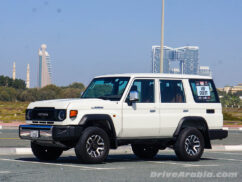
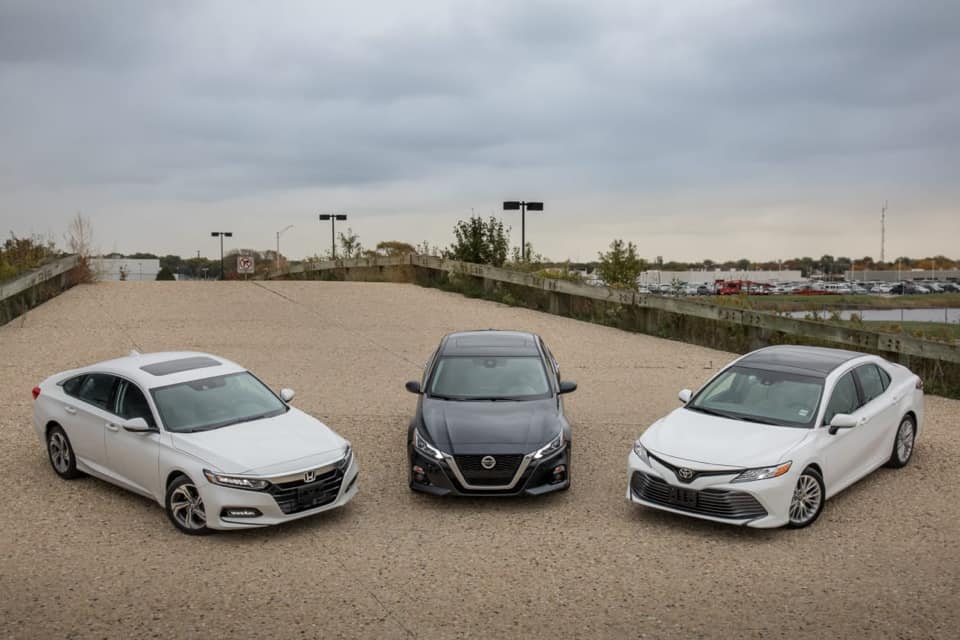
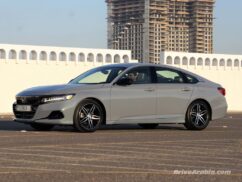
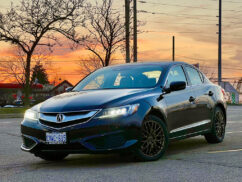
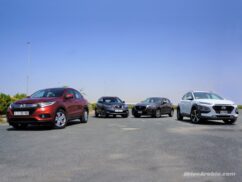
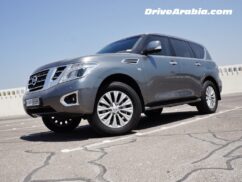
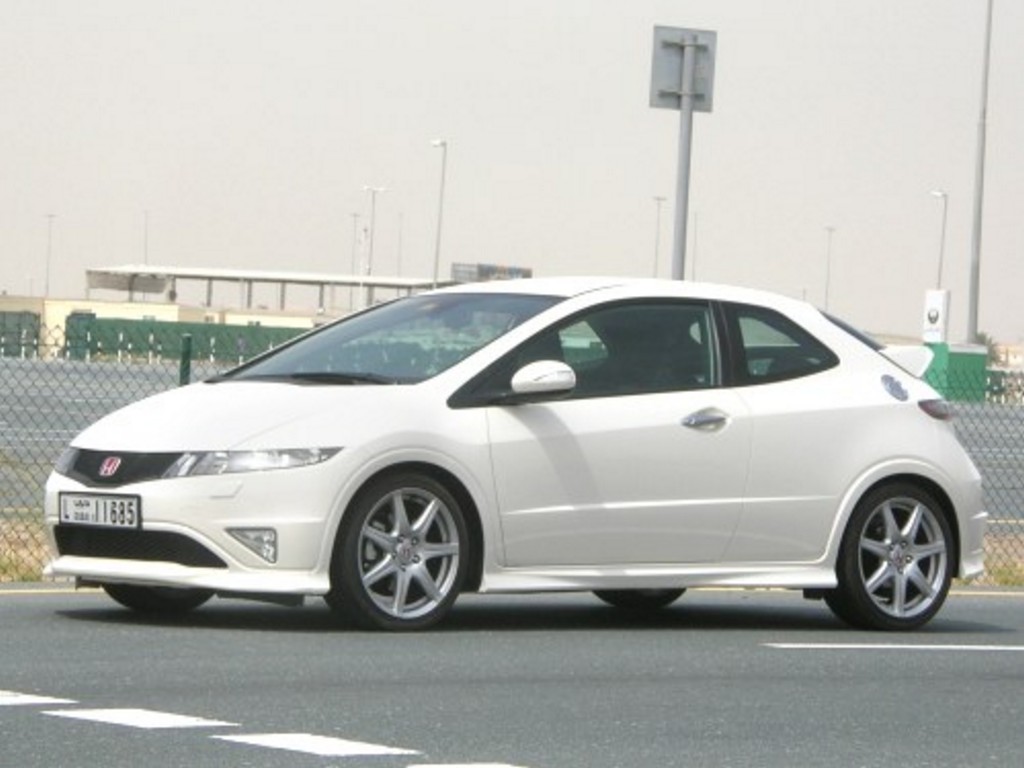
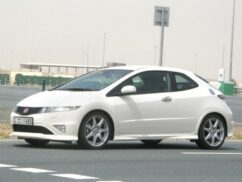
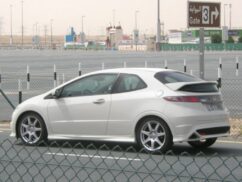



Comments
Jon
Nice review which mirrors my exact thoughts about this car. I recently acquired one of these, and the driving experience is truly phenomenal! I needed something that I could drive daily, still have a bit of fun with, yet be practical…and this fits the bill perfectly. My other car is a Honda S2000 for when I really need to pick the speed up.
I would put your performance numbers down to lack of experience, and a car that had not been broken in yet…possibly combined with non ideal conditions. Honda claims 0-100km/h in 6.6 seconds, although I have not seen those matched by any reputable magazine, I have seen numbers of 6.8 and 6.9 seconds at best. I have also seen 7.4 – 7.8 as well. This just proves that his car is a true driver’s car, and requires utmost skill and dedication to get the best out of it. Truly rewarding if you manage it. (Not saying I can yet).